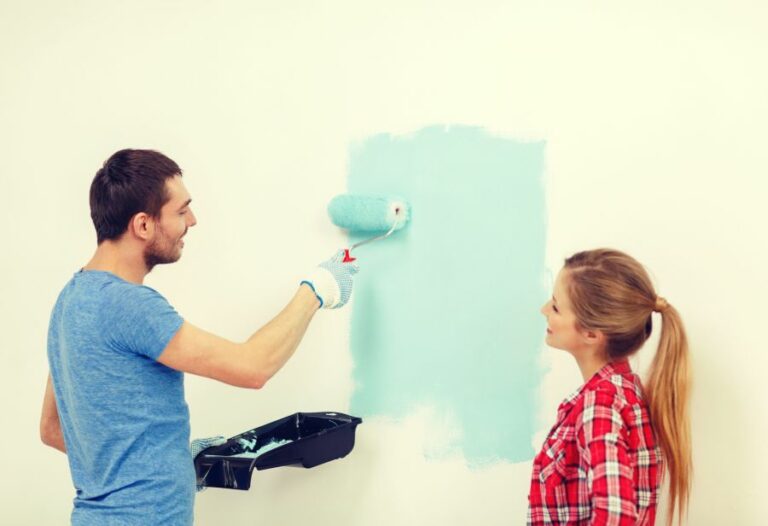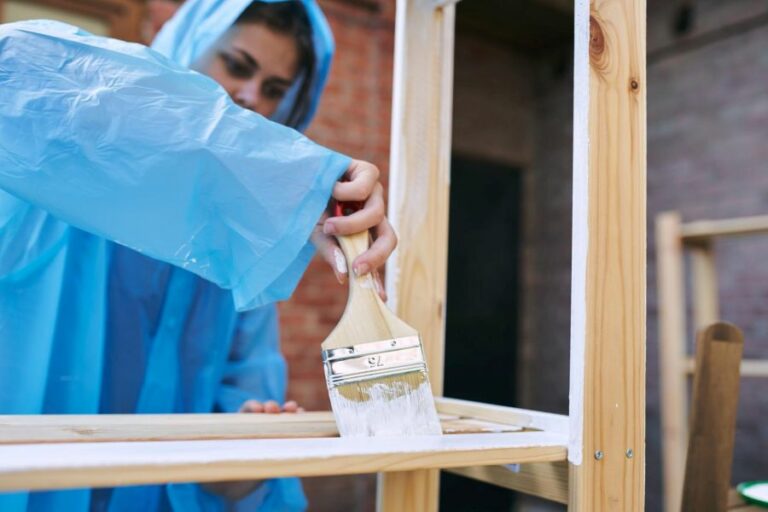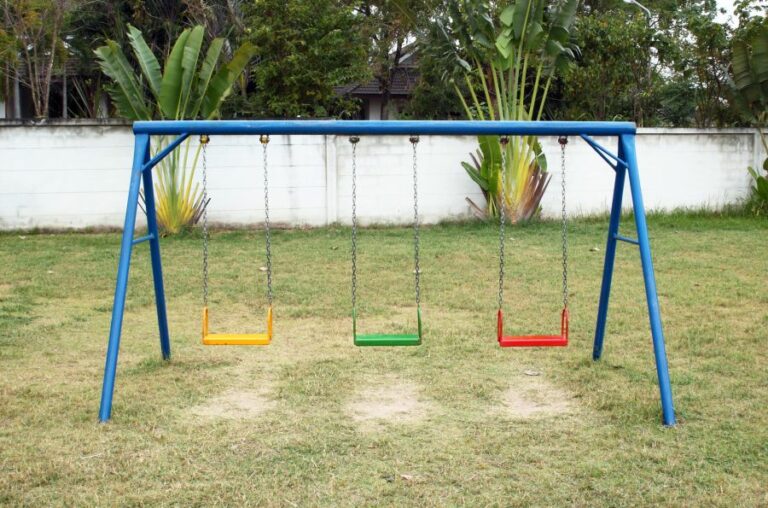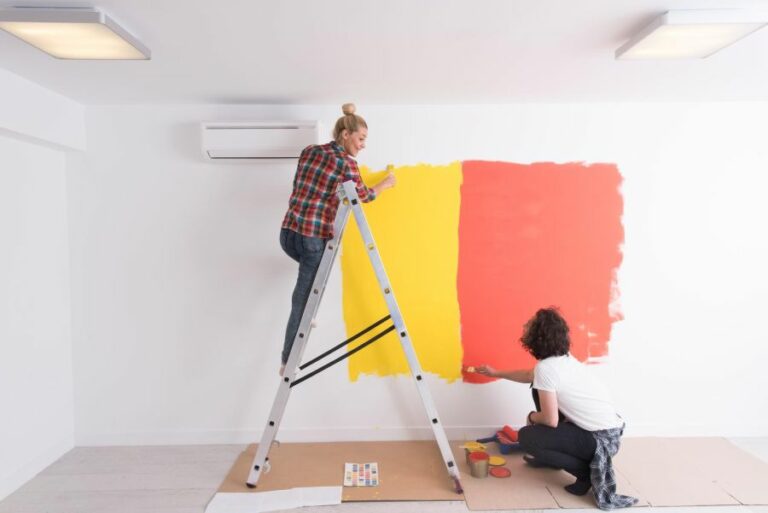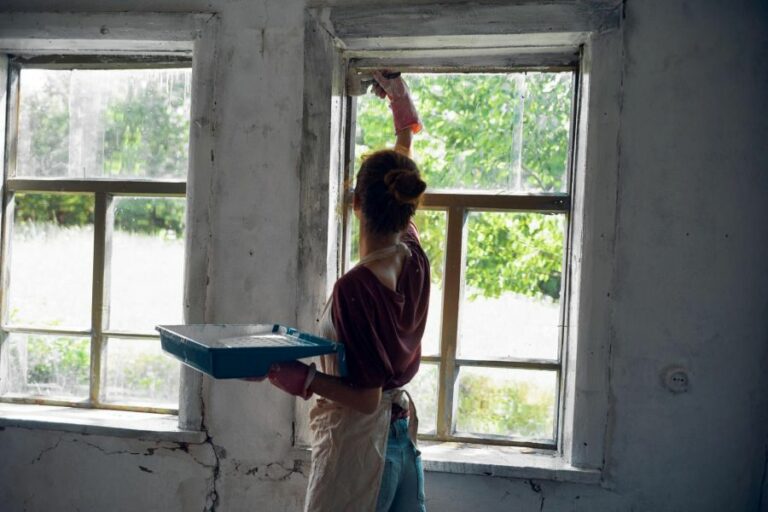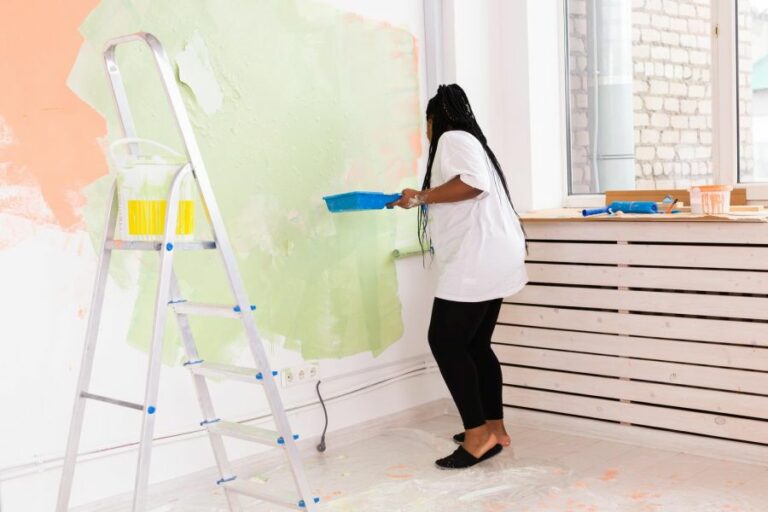Do You Need Primer For Outdoor Paint. What Pros Say
Are you about to embark on an outdoor painting project and wondering if you need that extra layer of primer? Don’t let your paint job fall victim to the harsh outdoor elements! Our comprehensive blog post, “Do You Need Primer for Outdoor Paint?” answers this question and provides expert advice to ensure the longevity of your outdoor paintwork.
Do you need a primer for outdoor paint:
Primer is an essential foundation for outdoor paint applications, providing a cohesive surface for improved adhesion, ensuring paint durability, and protecting against weathering and flaking. As a levigator, primer covers imperfections, creating a smooth canvas while hiding stains and economizing paint usage. When selecting a primer, consider factors such as freshly installed surfaces, variable textures, dramatic color shifts, and glossy substrates for the best results.

Discover how primer affects your outdoor painting projects, its importance in maintaining the paint’s durability, and when it’s essential to use. Learn helpful tips and expert recommendations to ensure your exterior paint job stays vibrant and long-lasting.
Contents
- 1 Is Primer Necessary for Exterior Paint Applications?
- 2 Is it necessary to apply a primer before using exterior paint?
- 3 Consequences of Neglecting Primer Application Prior to Painting
- 3.1 • The Perils of Skipping Primer
- 3.2 • The Financial Impact
- 3.3 • Specific Scenarios: When the Primer is Paramount
- 3.4 • In Conclusion: The Lasting Impression
- 3.5 • Can You Paint Over Existing Exterior Paint? A Comprehensive Guide to Rejuvenating Your Home’s Facade
- 3.5.1 – Surveying the Scene: Assessing the Current Condition of Your Home’s Exterior Paint
- 3.5.2 – A Meticulous Approach: Prepping Your Home’s Exterior for a Superb Repainting Outcome
- 3.5.3 – Rejoicing in Diversity: Choosing the Apposite Tools and Techniques for Your Home’s Exterior Repainting Project
- 4 Is it necessary to apply primer on outdoor wood surfaces prior to painting?
Is Primer Necessary for Exterior Paint Applications?
• A Quintessential Foundation: The Primer
Embarking on an outdoor painting endeavor, one might wonder about the necessity of a primer. This base layer often underestimated, serves as the foundation for an impeccable finish.
• Unveiling the Alchemy: Primer’s Role in Outdoor Painting
Before diving headfirst into the painting process, it’s crucial to discern the value of primer in your project. Here’s an exploration of primer’s indispensable benefits.
– Adhesion: Forging the Bond
Primer provides a cohesive surface for the paint to latch onto, thus improving adhesion. The bond between the primer and the paint ensures durability, safeguarding against premature weathering, blistering, and subsequent flaking.
– Levigation: Smoothing Out the Creases
Primer acts as a levigator, filling minor imperfections and creating a uniform, even canvas. Saddling the substrate with the right primer paves the way for a smoother finish, diminishing the visibility of blemishes and fissures.
– Hiding Power: Subduing Obstinate Stains
A pivotal feature of the primer is its capacity to obliterate stubborn stains and marks. It offers a clean slate devoid of previous discolorations, allowing the true hue of your chosen paint to bathe your outdoor walls with unfettered brilliance.
– Resourcefulness: Economizing Time and Paint
Incorporating a primer can reduce the overall consumption of paint by forming an opacifying barrier. This promotes optimized coverage, diminishing the need for multiple layers of paint and consequently conserving both time and resources.
• Deciphering the Need: When to Appoint Primer in Outdoor Paint Projects
When determining the necessity of primer in your outdoor painting pursuit, consider these factors.
– Newly Installed Surfaces
Freshly installed materials such as wood, stucco, or brick may be more porous or absorptive than their seasoned counterparts. Employing a primer can mitigate undue absorption, thereby promoting an even and desirable outcome.
– Variable Textures
When working with heterogeneous surfaces or transitioning between dissimilar materials, primer is crucial. This versatile component bridges the gap, providing a consistent base upon which you can unleash your creative vision.
– Fleeting Color Schemes
When effectuating a dramatic shift in color – e.g., from light to dark or vice versa – primer can abet the transformation. It neutralizes the existing hue, enabling the subsequent paint to envelop the surface uninhibitedly.
– Refashioning Glazed Dispositions
Glossy or slick surfaces can present challenges for proper paint adherence. Adding a primer in such instances offers a roughened substrate for the paint to cling to, reducing the likelihood of peeling or cracking.
• The Perfect Match: Choosing the Right Primer
Just as each paint conveys its unique attributes, so too do primers. Therefore, it’s essential to appoint a primer that resonates with both your surface and the intended paint.
– Alkyd or Oil-Based Primer
This classic primer is ideal for raw, unfinished surfaces like wood, as it penetrates deeply and offers impressive stain-blocking and moisture-resisting capacities.
– Acrylic or Water-Based Primer
An environmentally friendly, low-odor option, acrylic primer is perfect for pre-painted or previously primed surfaces, as well as substrates that contain water-soluble stains.
– Shellac Primer
Distinguished by its unparalleled stain-blocking potency, shellac primer eradicates even the most potent blemishes. It’s well-suited for smoke-damaged, water-stained, or ink-riddled surfaces.
• A Masterstroke of Preparation: Applying Primer
To ensure optimal results, adhere to the following primer application tips:
- Ensure thorough substrate cleansing, removing all dirt, dust, debris, and mildew.
- Attend to any existing damage like cracks or holes, mending such defects with filler or caulking.
- Abide by the manufacturer’s instructions and guidelines for adequate dilution, mixing, and drying times.
- Employ an appropriate brush, roller, or sprayer for application, coating the surface methodically and uniformly.
In conclusion, while not every outdoor paint project mandates the use of a primer, its inclusion bolsters the final outcome significantly. A well-chosen and properly applied primer pave the path to an extraordinary and enduring masterpiece.
Is it necessary to apply a primer before using exterior paint?
• The Indispensable Merits of an Exterior Primer
Exterior primers are to paint what the decisive foundation is for building structures. Often doubted and contested, primers not only amplify but also buttress the longevity and efficacy of paint applications.
This segment elucidates the unmatched qualities that form a robust case for the indispensability of exterior primers.
– A Prologue to Augmented Adhesion
Some surfaces possess capricious demeanors, presenting formidable challenges for paints to latch on to. Primers act as a preface to the paint’s story, establishing a significantly improved tenacity between the substrate and successive layers.
This ensures the quintessential adhesion, preventing any premature peeling or chipping that might sully the resplendent visage.
– The Alleviation of Porous Peculiarities
Painting over porous surfaces like wood, untreated concrete, or a porous mosaic of plaster can cause varghese patterns of uneven absorption, leading to discolored splotches that mar the appearance.
Primers serve as a potent elixir for porous predicaments, sealing the substrate and curbing the absorption of subsequent layers. In doing so, they maintain the fastidious consistency of the paint application.
• Unmasking Latent Impediments
Imperfect, weathered, or blemished surfaces often play host to underlying issues that can ambush the paint’s integrity. Exterior primers play the pivotal role of a clairvoyant remedy, exhibiting the following attributes:
– Subduing the Tyranny of Tannins
Wooden surfaces imbued with tannins present a challenge for even the most impervious of paint layers. Tannins can breach through the paint, leaving unsightly stains that compromise the intended aesthetic.
Primers act as a stalwart barrier, laying siege to the tyranny of tannins and ensuring an immaculate canvas for the paint to adorn.
– Showdown with Stains and Residues
The onslaught of time and elements can leave indelible marks on surfaces. These stains and residues can create adversarial conditions for paint adherence.
By applying a primer, you effectively engage in a showdown with these blemishes, neutralizing their harmful impact and paving the way for a seamless and flourishing paint job.
• The Tailoring of Primers for Resplendent Results
You can attain seamless, harmonious, and enduring results by employing primers appropriately engineered for specific surfaces or conditions. It is imperative to select primers that complement your paint endeavors judiciously.
– The Astute and Circuitous Bond
Intricate surfaces, such as those heavily textured or adorned with elaborate details, necessitate primers with a circuitous bonding capability. This enables the primer to adhere flawlessly to the contours and intricacies of the substrate, making it an impassable bastion for the forthcoming paint layers.
– Harmonizing with Humidity and Temperature
Exterior painting projects must adapt to the caprices of ambient conditions. By ascertaining primers that work in concert with the myriad complexities of temperature and humidity, you ensure a swift and successful paint application that stands the test of time and elements.
• To Prime or Not to Prime: The Verdict
In light of the compelling evidence presented in this inquiry, it is incontrovertible that the role of exterior primers is not just advantageous but absolutely essential. They serve as the bedrock of an impeccable and timeless paint application.
Categorically, a primer is a non-negotiable prerequisite for achieving superlative results in exterior painting projects.
By embracing and upholding the resounding merits of exterior primers, you not only enrich the caliber and longevity of your paint job but also partake in the ineffable delights of a visage that stands unblemished against the vicissitudes of time and nature.
Consequences of Neglecting Primer Application Prior to Painting
Painting is an art form that entails the meticulous layering of colors to produce a visually appealing result. However, before embarking on this creative journey, it is essential to establish a sturdy foundation.
This foundation material is known as primer, and despite its importance, some may erroneously omit this step.
• The Perils of Skipping Primer
– Compromised Adhesion: The Battle against Attrition
Omitting the primer imparts an adverse impact on paint adhesion. The primer establishes a robust bond between the surface and the paint, curbing the potential for peeling or chipping. Without the adequate base that primer provides, the paint may fail to remain steadfast, resulting in unsightly deterioration and an increase in maintenance requirements.
– Uneven Absorption: The Descent into Dissonance
The non-uniformity plagues the surface that lacks primer, fostering an environment of erratic paint absorption. Consequently, the painted surface exhibits a discordant appearance with patches of uneven coverage.
Primer functions as a sealer, rectifying the porous nature of surfaces and promoting consistent absorption. Without primer, surfaces become susceptible to a cacophony of visual incongruence.
– Color Fidelity: The Struggle for Chromatic Clarity
Forgoing the primer can lead to a frustrating compromise in color fidelity. Primer facilitates the creation of an affordable monochromatic canvas conducive to vibrancy and chromatic accuracy.
Without the neutral substrate, surfaces remain incapable of accurately reflecting the intended hues, distorting your intended masterpiece with unwanted undertones.
• The Financial Impact
– Inefficient Coverage: Pursuing the Elusive Opacity
Eschewing primer compromises the paint’s ability to cover surfaces efficiently. In a futile pursuit of desired opacity, multiple layers become necessary, exponentially inflating the quantity of paint consumed.
Contrastingly, primer acts as a unifying layer, offering a level cipher that improves paint coverage and ultimately preserves your hard-earned resources.
– Premature Repainting
Neglecting primer expedites the need for repainting, a costly endeavor both in terms of finances and time. Comprehensive adhesion and longevity are hallmarks of primer-assisted painting.
In the absence of these characteristics, the painting is prone to accelerated degradation, increasing the burden on your wallet and your schedule.
• Specific Scenarios: When the Primer is Paramount
– New Surfaces: Embarking on a Pristine Path
Untouched surfaces exemplify the necessity of primer application. Untreated wood or drywall possesses innate porosity, making them particularly vulnerable to absorbent irregularities. Primer seals the surface, safeguarding against disparate absorption and creating a uniform platform for paint application.
– Concealing Stains: The Vanquishing of Visual Afflictions
Primer demonstrates remarkable prowess in concealing stains, blemishes, and other unsightly marks. Low-opacity primer obfuscates dark colors and persistent stains, ensuring that the final paint layer reflects the intended hue without any unwanted interference.
As a versatile multitasker, primer adapts to a diverse assortment of materials, such as metal, plastic, and other uncommon substrates in the painting world. Appropriate primer selection ensures optimal adhesion and longevity, regardless of the encountered surface.
• In Conclusion: The Lasting Impression
Neglecting primer application before painting ultimately generates undesirable consequences with respect to adherence, visual presentation, and financial efficiency.
By staunchly incorporating primer into your painting process, you elevate your creation’s longevity, vibrancy, and overall quality, transcending the pitfalls of a primer-less approach.
Potential Issue | Description |
|---|---|
Poor Paint Adhesion | Without primer, the paint may have trouble adhering to the surface, leading to peeling or bubbling. |
Uneven Paint Coverage | Primer helps even out the surface, so the paint goes on smoothly. Without it, you may need more coats to achieve a consistent finish. |
Inefficient Use of Paint | Primer seals porous surfaces, reducing paint absorption. Without it, the surface may absorb more paint, requiring more coats. |
Visible Surface Imperfections | Primer can help fill and hide small imperfections in the surface. Without it, these flaws may show through the paint. |
Reduced Durability | When the paint is applied without primer, its durability may be compromised, leading to a shorter lifespan for the paint job. |
• Can You Paint Over Existing Exterior Paint? A Comprehensive Guide to Rejuvenating Your Home’s Facade
– Surveying the Scene: Assessing the Current Condition of Your Home’s Exterior Paint
A critical initial step in the process is to rigorously appraise the extant condition of your home’s exterior paint in order to determine whether merely applying a fresh coat will suffice or if more extensive remedial measures will be necessary.
- Flaking and Peeling: When exterior paint has commenced a gradual descent into decrepitude, manifesting telltale signs of flaking and peeling, this necessitates the scrupulous removal of such compromised layers prior to applying any new coat.
- Alligatoring and Cracking: When categorically more severe fissures disrupt the facade, a phenomenon denoted as “alligatoring,” the paint must not simply be removed, but comprehensive repairs should be conducted to address any underlying issues.
- Mildew and Mold: Encountering microbial blights such as mildew and mold lurking beneath the current layer of paint is a harbinger of the need for unsparing measures, including treating the afflicted surfaces and procuring paint products that thwart the resurgence of these biological invaders.
– A Meticulous Approach: Prepping Your Home’s Exterior for a Superb Repainting Outcome
Embarking on the path to vivify your home’s exterior through innovative repainting necessitates the adoption of a methodical approach in order to achieve a harmonious blend where the new paint bonds impeccably with the extant layers.
Eschewing haphazard application will ensure the longevity of your fresh coat without the vexatious pitfalls of untimely flaking or unforeseen adhesion issues.
Step 1: Cleaning the Canvas
Undertaking a robust yet non-abrasive cleaning of your home’s exterior surfaces is paramount to purging any dirt, debris, and residual contaminants that might impede the pristine bonding of new paint.
Utilize a gentle, environmentally-friendly detergent and a soft-bristle brush to scour the facade, or consider opting for a low-pressure power washing treatment if the situation warrants it.
Step 2: Scrutinizing the Surface
Before proceeding to the actual repainting, it is crucial to conduct a scrupulous examination of the exterior surfaces for any lingering faults or unrevealed imperfections.
Should any fractured, flaking, or jagged segments be encountered, the subsequent use of a scraper or sander is essential to achieving a smooth, even base.
Step 3: Repairing and Priming
Depending on the identified foibles and frailties, this step might encompass the adroit use of wood filler, caulk, or other suitable materials to mend and remedy fissures, gaps, and weakened areas.
Additionally, applying a high-quality primer is indispensable to serve as an adhesive undercoat, yielding an enduring and consistent paint application on top of the preexistent layers.
– Rejoicing in Diversity: Choosing the Apposite Tools and Techniques for Your Home’s Exterior Repainting Project
Your home’s facelift and revitalization rely on judicious selection from a panoply of painting paraphernalia abounding in modern markets while employing tried-and-true tactics that embellish both aesthetics and sustainability.
- Paint Selection: Opt for an exterior paint that boasts remarkable adhesion, prodigious opacity, and consummate resistance to meteorological and environmental factors.
- Enviable Versatility: The prudent choice of brushes, rollers, and paint sprayers will not only support your particular painting approach but will provide the tangible benefits of dexterity and adaptability in navigating the nooks, crannies, and sundry quirks of your home’s exterior.
- Methodical Mastery: Gauge the timing and sequence of your painting project to circumvent common headaches, such as grappling with variable weather conditions, coping with unexpected hitches, or managing potentially deleterious overlaps on distinct surface segments.
In summation, the prospect of emblazoning your home with a new layer of exuberant exterior paint hinges on a meticulous and all-embracing appraisal of your home’s current condition, coupled with the systematic execution of prepping and application using the finest tools and techniques at your disposal.
With perspicacity and determination, your dreams of reinvigorating your home’s facade will soon crystallize into a visually stunning synthesis of enthralling aesthetics and exceptional durability.
| Can you paint over the existing exterior paint? | |
|---|---|
| Yes, you can | It is possible to paint over existing exterior paint as long as the surface is properly prepared. This includes cleaning, repairing any damage, and ensuring the paint is still in good condition. If the old paint is in poor condition (peeling, cracking, etc.), it should be removed before applying a new coat of paint. |
| Preparation | Proper surface preparation is key to a successful paint job. This includes cleaning the surface, removing any loose or peeling paint, repairing any damage, and ensuring the surface is dry before applying the new paint. |
| Primer | Using a primer is important, especially when painting over existing paint in a different color or paint type. Priming the surface will provide a better and more durable bond between the old and new paint layers. |
| Weather conditions | When painting over existing exterior paint, it is important to consider the weather conditions. It’s best to paint when the temperature is between 50-90F and the humidity is low. Avoid painting in direct sunlight or on windy days. |
Is it necessary to apply primer on outdoor wood surfaces prior to painting?
• A Critical Exploration of the Necessity for Priming
Painting outdoor wood surfaces gives off a picturesque aura, reinvigorating your haven’s aesthetic allure. However, one crucial question arises: is priming the timber a sine qua non? Delving into this query, our discourse unveils the kernel of truth and elucidates pivotal facets associated with priming outdoor wood.
– The Quintessence of Primer: A Linchpin to Longevity
Primers, the unsung heroes of the painting process, harbor many benefits. In a nutshell, they’ve formulated amalgams tailored to forge an enduring liaison between the base material and topcoat, acting as the linchpin.
Not using primer could lead to many issues, notwithstanding the milieu in which the painting is conducted. Below elucidates the unparalleled advantages of priming the canvas before that first brushstroke.
1. Fortification Against Moisture
Intrinsic to outdoor settings, the predilection for moisture infiltration renders wooden structures vulnerable to rot and decay.
Primers wield hydrophobic properties, thus extending an insurmountable defense against moisture incursion. Including this additional shield unequivocally protracts the longevity of your outdoor painting endeavor.
2. Elevated Topcoat Adherence
As the primer melds with the substructure, it provides a cohesiveness that reinforces adherence between the base and top coat. This precludes the topcoat from flaking or peeling, engendering an impeccable finish led by capillary action.
3. Excellent Obfuscation
Like a maestro’s symphony, priming harmonizes the cacophony of porous wooden surfaces. As it blankets the canvas, pores become clogged, fostering a flawless fusion of layers.
In doing so, primers impart an excellent obfuscation with faithful color rendition, thereby ensuring the final representation transcends your aesthetic expectations.
– Discerning the Right Primer: A Calculated Endeavour
In the midst of a cornucopia of primer options, it becomes exigent that one selects the accurate molecular concoction that aligns with their project. Following parameters act as a lodestar to navigate this labyrinthine decision-making process.
1. Exterior vs. Interior Primers
Contrary to indoor timber, outdoor wood remains at the mercy of erratic weather conditions. Consequently, exterior primers proffer attributes that shield the substrate against climatic fluctuations, delineating the premise of suitability.
2. Oil-Based vs. Water-Based
Among the panoply of primers, oil-based and water-based variants rise to prominence. As a rule of thumb, oil-based formulations warrant exceptional durability and adhesion, albeit with a lengthier curing duration.
Water-based primers, on the other hand, proffer environmental safety and expedited drying time. Appraise your priorities judiciously, keeping in mind the particularities of your project.
3. Understand the Underlying Chemistry
Parse through the gamut of primer components with a discerning eye towards driers, solvents, binders, and pigments, lest you unwittingly hinder the substrate-topcoat cohesion. Assessing these components ensures a meticulous pairing with the substrate and culminates in sterling outdoor artwork.
– A Resounding Verdict
As our sojourn scrutinizing the import of priming ambulates towards its denouement, one thing stands clear: Priming outdoor wood before painting is an indispensable endeavor.
This procedural step fosters a symbiotic relationship between substrate and topcoat, extending durability and finesse. Embrace the primer. Your wooden tableau awaits!
Question | Answer |
|---|---|
Do you have to prime outdoor wood before painting? | Yes, priming outdoor wood is recommended to ensure proper adhesion of paint and to protect the wood from moisture and other potential issues. |

